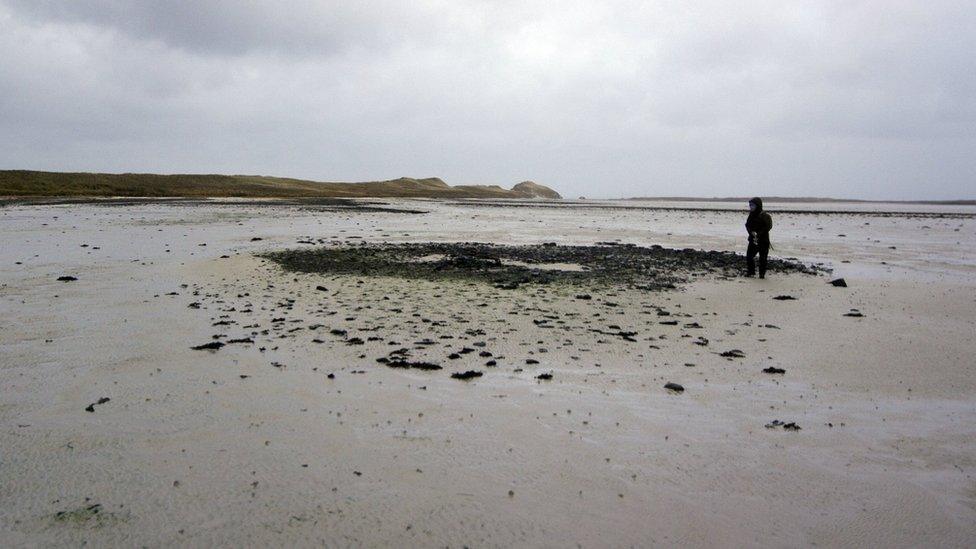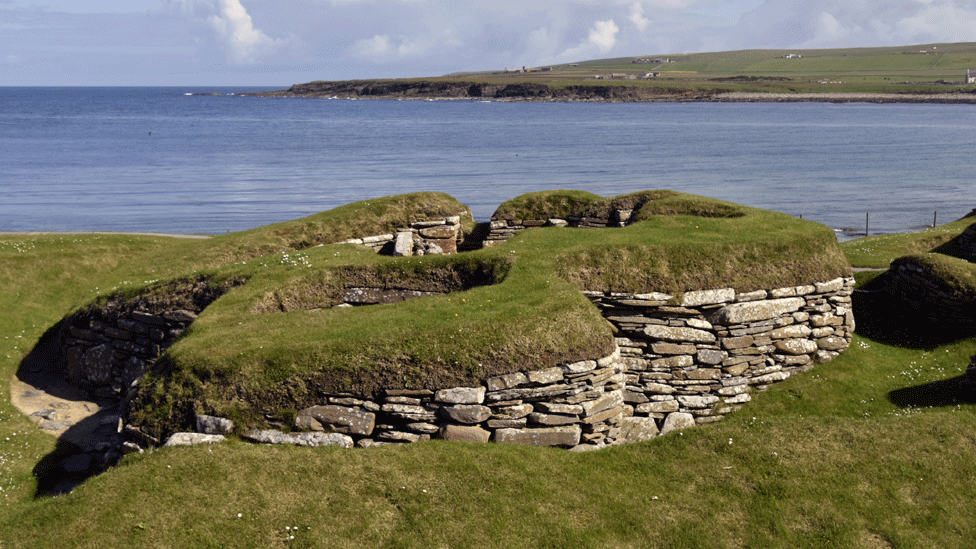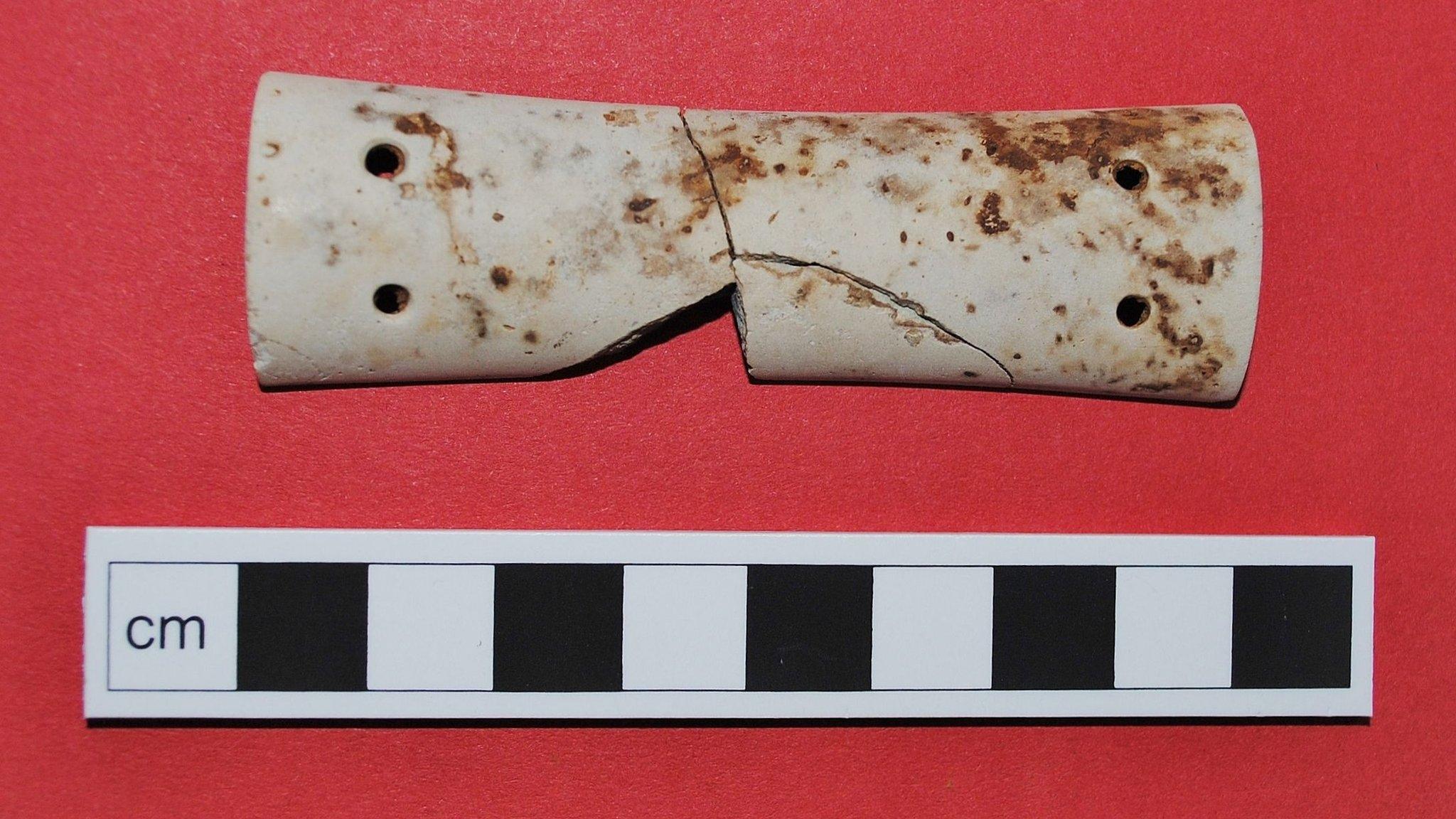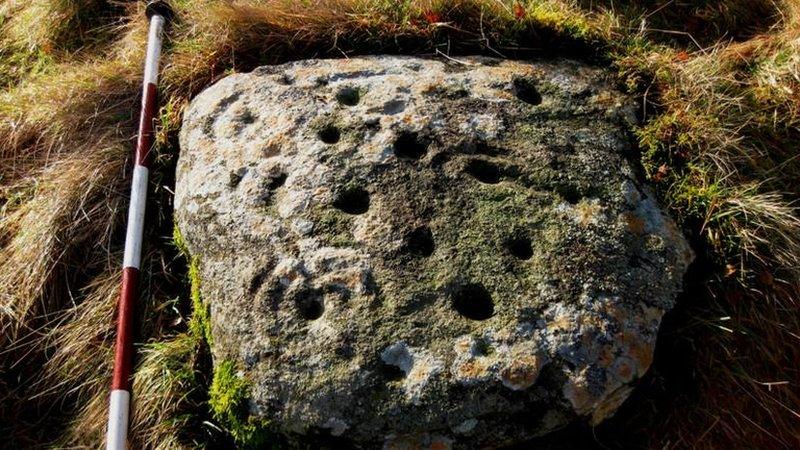Shifting sand dunes reveal large Bronze Age settlement
- Published

Prof Jane Downes examines one of the house structures found at Tresness
Shifting sands have revealed a significant complex of Bronze Age buildings in Orkney.
Archaeologists made the discovery at Tresness in Sanday while on a walk in poor weather on Monday.
The remains of 14 houses and stone tools, including knives, have been described as "one of the biggest complexes of Bronze Age settlement in the Scottish isles".
The finds on the beach could be more than 4,000 years old.
Archaeologists believe the houses were buried by sand dunes in the second millennium BC - but have recently been exposed by the actions of weather and the sea.
Prof Jane Downes and Christopher Gee, of the University of the Highlands and Islands, Prof Colin Richards, of the University of Manchester and Dr Vicki Cummings, of University of Central Lancashire, made the discovery.
They were on a sea shore walk to visit a known archaeological site when they spotted the remains of the houses and stone tools.

Archaeologists came across the Bronze Age settlement while on a walk to a known archaeological site

The remains of the Neolithic settlement at Skara Brae in Orkney
Prof Downes, who specialises in the Bronze Age, said: "This must be one of the biggest complexes of Bronze Age settlement in the Scottish isles, rivalling the spreads of hut circles in other parts of mainland Scotland."
The scale of the Sanday has been described as "unparalleled in Orkney". The islands are well-known for the Skara Brae Neolithic settlement.
'Thrilling discovery'
Cath Parker, leader of the Sanday Archaeology Group, said: "This is incredibly exciting.
"The archaeological landscape concealed beneath Sanday's shifting sands never ceases to amaze us.
"I'm sure the local community will relish the opportunity to be involved with any work which stems from this thrilling discovery."

A Bronze Age wrist guard was found at Drumnadrochit
Important Bronze Age discoveries have been made in recent years in other parts of Scotland.
Skeletal remains found at Drumnadrochit on the shores of Loch Ness were identified in February as dating back to the Early Bronze Age.
A wrist guard, for use with a bow and arrow, and shards of pottery were among remains found in a burial cist that was uncovered during work to build a new health centre.
Evidence of Bronze and Iron Age settlements were found at the site of the new Inverness Campus. The remains of timber-built roundhouses and crop marks were recorded at East Beechwood.
- Published3 February 2015

- Published27 February 2014
